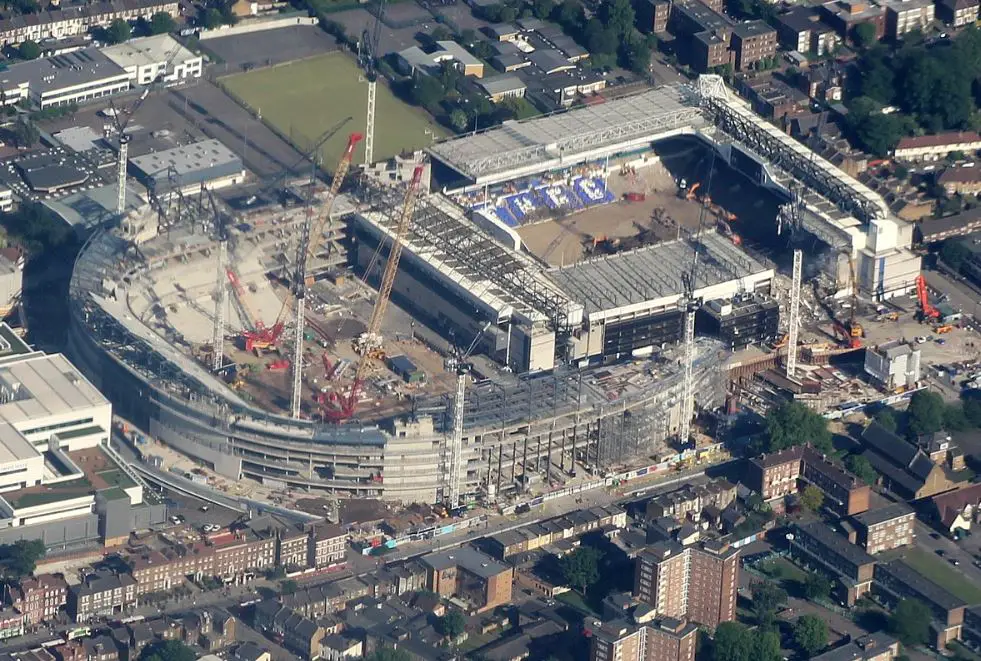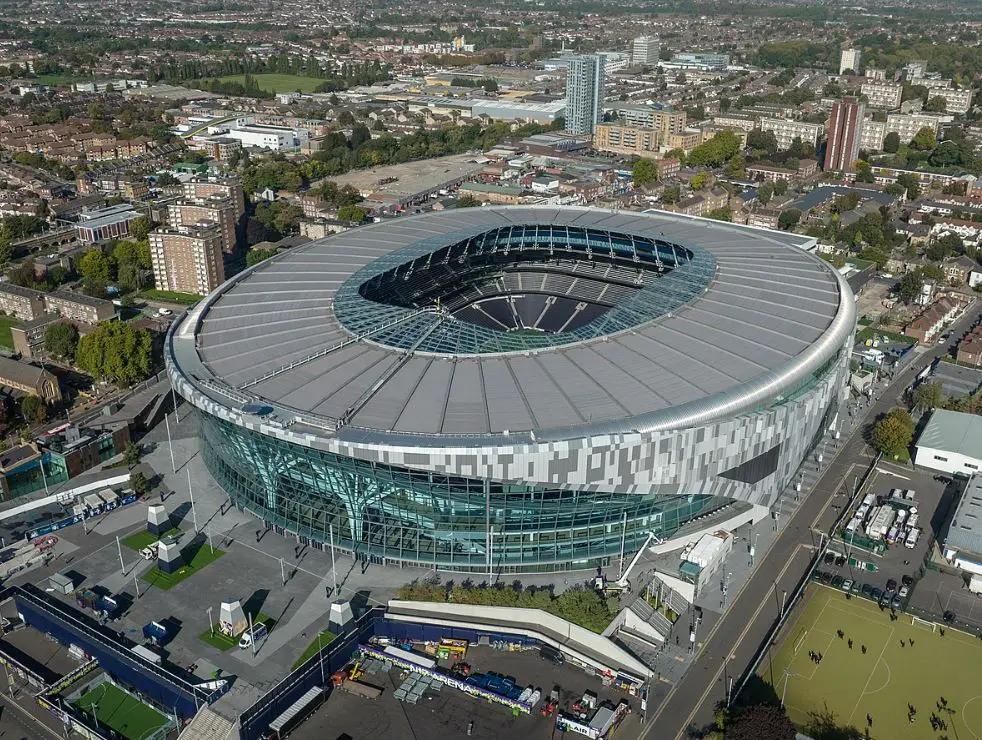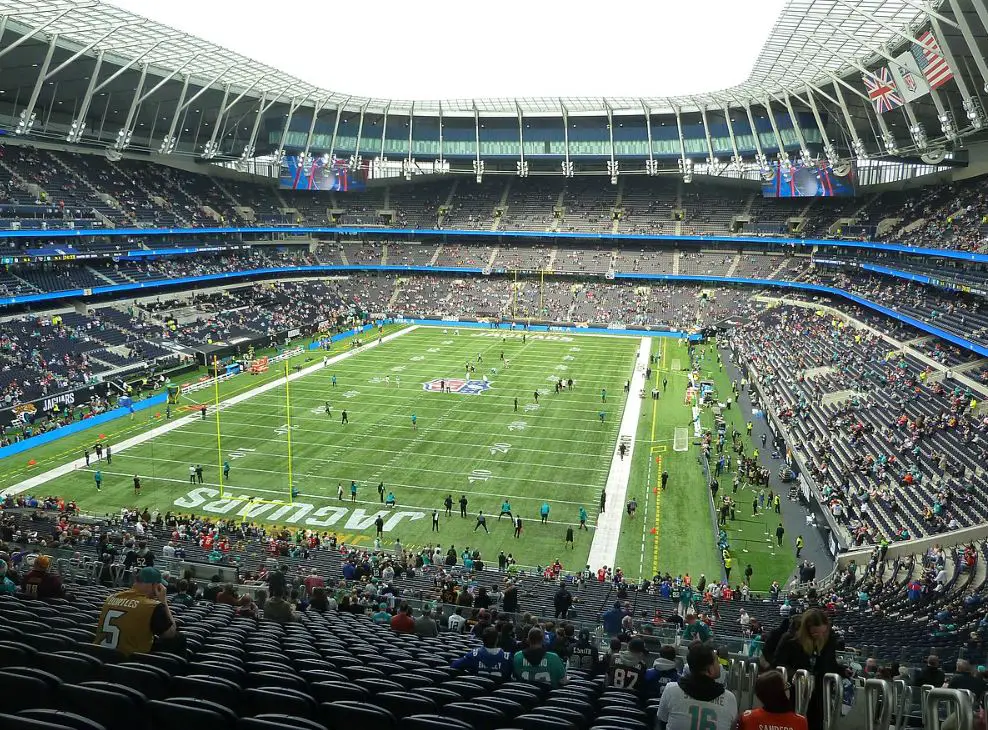Tottenham Hotspur Football Club’s new stadium is an incredible feat of architecture that has redefined the matchday experience for fans.
Built on the site of the club’s former home, White Hart Lane, the new stadium honors the legacy of the old while incorporating modern amenities and technology.
From the entrance modeled after the old stadium to the preserved artifacts on display, the new Tottenham Hotspur Stadium is a celebration of the club’s history and its connection to the local community.
In this article, we’ll take a closer look at the features and amenities of the new stadium, how one of the biggest stadiums in England was constructed, and the impact it has had on the club and the fans.
We’ll also explore the history and legacy of White Hart Lane and how the new stadium pays homage to the club’s past. Whether you’re a fan of the club or simply interested in the latest developments in sports architecture, you’re bound to enjoy this one.
The history and legacy of White Hart Lane: How the new stadium honors the old
White Hart Lane was the home stadium of the Tottenham Hotspur Football Club for over a century, from 1899 to 2017. During its 118-year history, White Hart Lane became synonymous with the club and was an important part of the local community.
The stadium was known for its unique architecture and its tight, atmospheric seating, which created an intimate and intimidating atmosphere for opposing teams.
The club and the fans had a deep emotional attachment to White Hart Lane, it was not just a stadium, it was a home for generations of fans.
The decision to demolish the old stadium and build a new one was not an easy one, but the need for a modern, larger stadium with more amenities and revenue-generating opportunities was deemed necessary for the club’s future success.
The club has also ensured that many of the old stadium’s artifacts, such as turnstiles, signs, and seating, have been preserved and are on display at the new stadium, as a way to honor the history and legacy of White Hart Lane.

How the Tottenham Hotspur Stadium was built: The construction process and materials used
The construction of the Tottenham Hotspur Stadium was a complex and ambitious project that required significant planning and coordination.
The project began in 2015 and was completed in 2019, with the first match played at the stadium on April 3, 2019. The stadium was built on the site of the club’s former home and both the construction and demolition happened at the same time.

The construction process began with the excavation and foundation work, which involved removing more than 8,000 cubic meters of soil and rock to make way for the stadium’s foundation.
The foundation was built using a combination of traditional concrete and steel piles. The piles were driven deep into the ground to provide a solid foundation for the stadium.
Once the foundation work was completed, construction of the stadium’s superstructure began. The stadium’s superstructure is primarily made of steel, with a combination of pre-fabricated and in-situ construction techniques used. The steel used for the superstructure was sourced from a variety of locations including the UK, Poland, and China.
The stadium’s roof is also quite remarkable. The roof is a combination of a cable-net structure and a tensile membrane. The cable-net structure is made of steel and provides the main support for the roof, while the tensile membrane is made of a special type of fabric that is stretched over the cable-net structure to provide a weather-proof cover for the stadium.
The exterior of the stadium is made of a combination of glass, steel, and concrete. The glass is used to provide natural light to the interior of the stadium, while the steel and concrete are used to provide structural support and durability.

Inside the magnificent Tottenham Hotspur Stadium: A look at the features and amenities
The stadium has a capacity of 62,850 seats, making it the largest club stadium in London. With its cutting-edge design and innovative features, the stadium sets a new standard for sports architecture.
One of the most unique features of the stadium is its dividing, retractable pitch. This allows for both football and American football games to be played on the same field, and also allows for concerts and other events to be held on the pitch when it is not in use for sports.
This makes the stadium a versatile, multi-purpose venue that can host a wide range of events, and this certainly justifies the total price tag of £1 billion for the entire complex
The stadium also offers several entertainment options for fans, including a museum, which tells the story of the club’s history, and a megastore, which sells a variety of official club merchandise.
As you surely expected in a modern arena like this one, the Tottenham Hotspur Stadium also has a number of interactive features, such as digital screens and augmented reality experiences, which are designed to enhance the matchday experience for fans.

A fan’s guide to visiting the Tottenham Hotspur Stadium: Tips and tricks
A visit to the Tottenham Hotspur Stadium is an exciting and unforgettable experience for any football fan. Whether you’re a die-hard fan or just visiting for the first time, there are several things you should know to make the most of your experience.
First, plan ahead and purchase your tickets well in advance. Tickets for popular matches can sell out quickly, so it’s best to secure your seat as early as possible. You can purchase tickets through the club’s official website, or through authorized ticket vendors.
Next, be aware of the stadium’s location and plan your transportation accordingly. The stadium is located in North London and is easily accessible by public transportation.
The stadium is located near the White Hart Lane London Underground station, which is served by the London Overground and the London Underground (Victoria line).
This station is located approximately 10-15 minutes’ walk from the stadium. Additionally, Northumberland Park railway station is located near the stadium, this station is served by Great Anglia and London Overground.













